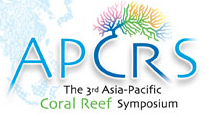Functional understanding of ecosystem-scale inputs and recycling over coral reef communities from stable isotope analyses of organic matter
Alex S.J. Wyatt1*, James J. Leichter2, Benoit Thibodeau1, Toshihiro Miyajima1, Craig A. Carlson3, Craig E. Nelson4, Toshi Nagata1
1Marine Biogeochemistry Laboratory, Department of Chemical Oceanography, Atmosphere & Ocean Research Institute, The University of Tokyo, Kashiwa, Chiba, JAPAN
2Scripps Institution of Oceanography, University of California at San Diego, La Jolla, California, USA
3University of California at Santa Barbara, Santa Barbara, California, USA
4Center for Microbial Oceanography: Research and Education, University of Hawai’i, USA
Stable isotope analyses (SIA) are an increasingly useful tool for understanding functional links between water flow and nutrient cycling over coral reefs, including relative fluxes of oceanic and reef-derived material. SIA have suggested that oceanic particulate organic matter (POM) flowing over reefs can be rapidly metabolized, with the subsequent release of remineralized inorganic nutrients, as well reef-derived POM, representing a significant resource for downstream communities. High oceanic concentrations of dissolved organic matter (DOM) relative to POM suggests DOM may be an even more significant resource, especially around low-POM reefs such as mid-ocean islands and atolls. However, DOM fluxes have rarely been quantified, perhaps due to the refractory nature of oceanic DOM and difficulties linking small concentration changes with spatial changes in both hydrodynamics and macro- and microbial communities. Our Lagrangian studies of DOM around Moorea, French Polynesia and Ishigaki Island, Japan suggest that DOM changes occurring over short spatial scales reflect a balance between uptake and release. SIA further suggest that the release of reef-derived DOM (i.e. enriched in 13C), perhaps relatively labile and from nitrogen fixing organisms (i.e. depleted in 15N), may promote nutrient recycling and supply to downstream communities. Linking SIA and local hydrodynamics offers a promising path towards elucidating the relative functional importance of oceanic and reef-level processes for reef communities.
Key words: dissolved organic matter, fluxes, particulate organic matter, recycling, stable isotope analyses

